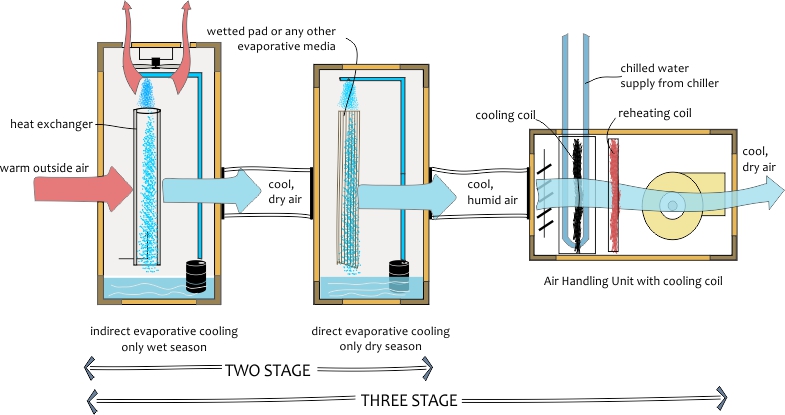
Schematic diagram of a multistage evaporative cooling system. A multi stage evaporative cooling system can work according to the humidity of ambient and humidity desired for supply air. When the relative humidity of ambient air is high, only indirect cooling can be used. This reduces the air temperature of supply air, but the humidity remains unchanged. When increase in humidity is also desired, as in dry hot seasons, direct evaporative cooling can be used
- Two stage evaporative cooling systems (direct + indirect) – the direct system could be functional during the dry season, when humidification of air is required, and indirect system can be used when air primarily needs to be cooled.
- Three stage evaporative cooling system (direct + indirect + cooling coil) consists of direct and indirect evaporative cooling together with conventional cooling coil. The addition of cooling coils (chilled water or refrigerants) is helpful in monsoon season when the humidity level is high and dehumidification is required. Fresh air passed through the coils controls both sensible and latent heat requirements. The coils are also useful in winter season when some heating is also required.
The drawback of the two stage system is the high humidity level of the supply air. Over a period of time indirect evaporative cooling systems which provide sensible cooling of the air without humidification have emerged in the market.
Table:Advantages and disadvantages of evaporative cooling systems

No comments:
Post a Comment